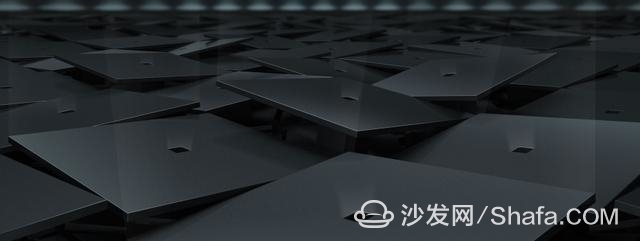What is the difference between the new term "non-screen TV" and ordinary projectors?
LED plus LCD panel technology is a screen TV; LED plus projection technology, is no screen TV, but also a branch of home projector. The key to the decision to screenless TV is projection technology. At present, the effect is relatively good, and the widely used application is DLP technology (Digital Light Processing). The Chinese name is: digital light processing. The core hardware supporting DLP is the DMD chip produced by Texas Instruments. The chip is mainly composed of one micromirror. Take the recent comparison of the firestorm AI without a screen TV Max6. For example, it has a physical resolution of 1080P. There are 2.07 million 5.4** microlenses in the DMD chip. Each micromirror represents a pixel, and the image is composed of these pixels. constitute. Since the pixels and the chip itself are quite small, the industry also calls these products using microdisplay devices as microdisplays. Currently 1080P is the highest display resolution of non-screen TVs.

The most widely used projector brightness standard is ANSI (American National Standards Institute is the meaning of the American National Standardization Institute). Since early projectors were mainly produced in the United States and Europe, such as 3M, BARCO, etc., while Japan was only their production base, early projectors were measured using the American "ANSI" standard. Over time, People have gradually become accustomed to this nominal method. At present, most of them use ANSI standards.
Non-screen TV lumens are generally higher than the projection, as the flagship of the non-screen TV represents the storm AI without screen TV Max6, its brightness is as high as 1100 ANSI lumens, ordinary projections are mostly hovering at 700 ANSI lumens, there are also some unknown no-name projections, brightness even With only 300 ANSI lumens, the picture quality is simply terrible. However, be careful, there are some projection products on the market, playing the so-called 3,000 or even 5000 lumens to confuse the audiovisual, we must see clearly, they are only standard 3000 lumens, but can not mark 3000 ANSI lumens, so the brightness of this piece is very well identified, Look first for ANSI, then look at the size of the numbers. There is ANSI better than nothing, with ANSI lumens, the bigger the number, the better.
[See lens]
Determine the lens is good or bad mainly to see two aspects: the lens material and processing fineness of the lens material
The AI ​​screenless TV Max6 is a lanthanum-based optical glass lens that is currently widely used in SLR cameras.
Compared to ordinary projection resin lens, it does not run out of focus, not out of focus, and the imaging effect is more outstanding.
The fineness of the lens is usually composed of multiple lenses, and the two surfaces of each lens are usually part of a sphere (the plane can be viewed as an infinite radius sphere). Therefore, the fineness of processing is particularly important, and the smaller the fineness, the smaller the error brought by imaging. With the current level of existing technology, it can reach a level of less than 0.01mm and belongs to the upper middle level. Most non-screen TVs are below 0.01mm, and ordinary projections often fail.

Non-screen TVs often use 1920 × 1080 physical resolution, built-in 2.07 million micro-mirrors, and most projections do not reach such high-definition, often only 720P or lower. Some projections are aimed at the so-called "support for 1080P content" attempt to confuse audiovisual support. Supporting 1080P content means that it can decode 1080P at most, but it is not necessarily 1080P physical resolution.
[See picture quality technology]
No screen TV is a professional TV picture quality display technology, or AI screenless TV Max6, this non-screen TV uses more than 30 quality technology of Storm artificial intelligence TV, the picture is refined, display The effect is almost the same as the flagship TV, but the projection is often not.

No screen TV comes with video content, do not need to download the APP, do not have to log in multiple accounts, open multiple members, direct mass video. There is no content projection, you need to download the APP of each video site, register each account, open members, the operation is quite troublesome.
So, the difference between a screenless TV and a TV → Difference between a screenless TV and a TV [Size]
The 65-inch TV is already considered to be a large-size TV. It is extremely low-key and has a very low price of more than 400,000. If it is not "Wang Sicong"-style life winner, it will only be able to sigh. The non-screen TVs have broken the limit of the size, 120 inches, 200 inches, and 300 inches. As long as your home's wall is big enough, "non-screen TV" is large enough. Currently, non-screen TVs mostly use a projection ratio of 1.2:1. There is no need to worry about insufficient distance or limited space. 2.6 meters can almost fill the entire wall.

Many people will say that many televisions are now 4K screens, and non-screen TVs are at most 1080P. This is a difference in quality. Actually, this will depend on the result of your final imaging. Content 4K, codec 4K, display 4K to see the real 4K image. The 4K screen just satisfies the performance of 4K display. Currently, the real 4K sources in the entire industry are very few (IQI currently has 700+ 4K videos). Individual enthusiasts should understand that at present a lot of video network so-called 4K is often 2K transcoding, the effect is in fact similar to 1080P.
No screen TV also has the same professional quality display technology as TV. Therefore, in the picture quality, a non-screen TV with a capacity of 1080P can be achieved. The resolution of the two is almost the same.
ã€Space requirements】
Because of its size restrictions, the TV does not need much space, and it has a TV range of 65 inches, a height of 84cm and a length of 146cm. Every family can meet this space, but once it is fixed, moving it is more troublesome.
The only requirement for a spaceless TV for space is to have an entire large white wall or curtain, whether in the living room, bedroom, study, or even outdoors, can be the home of a screenless TV, but TV can only be honestly treated. In one place. Of course, TV does not need to consider the issue of wall leveling or curtains. This may be the only inconvenience of a screenless TV.
ã€Content Services】
Content service This section does not currently screen TV is better to do storm AI no screen TV Max6, not only and Internet TV, bring their own content, do not need to download APP, do not log in multiple accounts, do not need to open multiple members . The key is that it also has a lot of AI2.0 technology that TV doesn't have. This artificial intelligence technology known as "response to flow" is in the same line with Storm artificial intelligence TV. Unlike ordinary smart TVs or smart projections, they simply disguise their artificial intelligence with a simple "speech search." AI screenless TV Max6 is a large-screen AI assistant that can realize voiceprint recognition, multiple rounds of dialogues, and identify personal relationships. People's thousands of surface AI information flow, multi-task parallel operation, etc., can also accommodate more artificial intelligence services through self-learning and evolution. This can be done in addition to storm TV and screenless TV. Others are temporarily unable to achieve this. So in the content service, no screen TV can be the same as TV, and even most TVs are better.
ã€price】
At present, 55-inch TVs are circa 5,000 or so, and 65-inch TVs are mostly about 8,000. However, by the time it reached 100 bucks, prices have increased exponentially. The sky-high price of 400,000+ is just a few people can afford.

In general, the non-screen TV has higher brightness, clearer picture quality, richer content and more artificial intelligence than ordinary projection. It is simply the existence of a spike; the biggest advantage over the TV is the view of the giant screen. For friends who like to watch movies, they can start with a screenless TV. Imagine that the whole wall loses the picture of the movie. This feeling is almost identical to that of a movie theater. The only difference may be that there is a popcorn machine at home.
Smart TV/box information can focus on smart TV information network sofa butler (http://), China's influential TV box and smart TV website, providing information, communication, TV boxes, smart TVs, smart TV software, etc. Answering questions.
In the rectifier circuit; the use of diodes in series can increase the back pressure withstand value (usually the sum of the back pressure of all diodes, but it is best to use diodes of the same specification).
In the voltage stabilization circuit; the series connection of the diode is equal to the sum of the voltage stabilization value of the diode. The use of diodes in parallel is theoretically the sum of rated currents, but considering that it is impossible to be absolutely symmetrical, they can only be used below 80% of the total.
TVS transient suppressor diodes work in the same way as regulator diodes, but there are structural differences.The biggest difference is that the PN junction area composed of the general regulator diode is very small, it can withstand the reverse current is small.
Transient Voltage Suppressor,Transient Voltage Suppressor Diode,Series diode
Changzhou Changyuan Electronic Co., Ltd. , https://www.cydiode.com